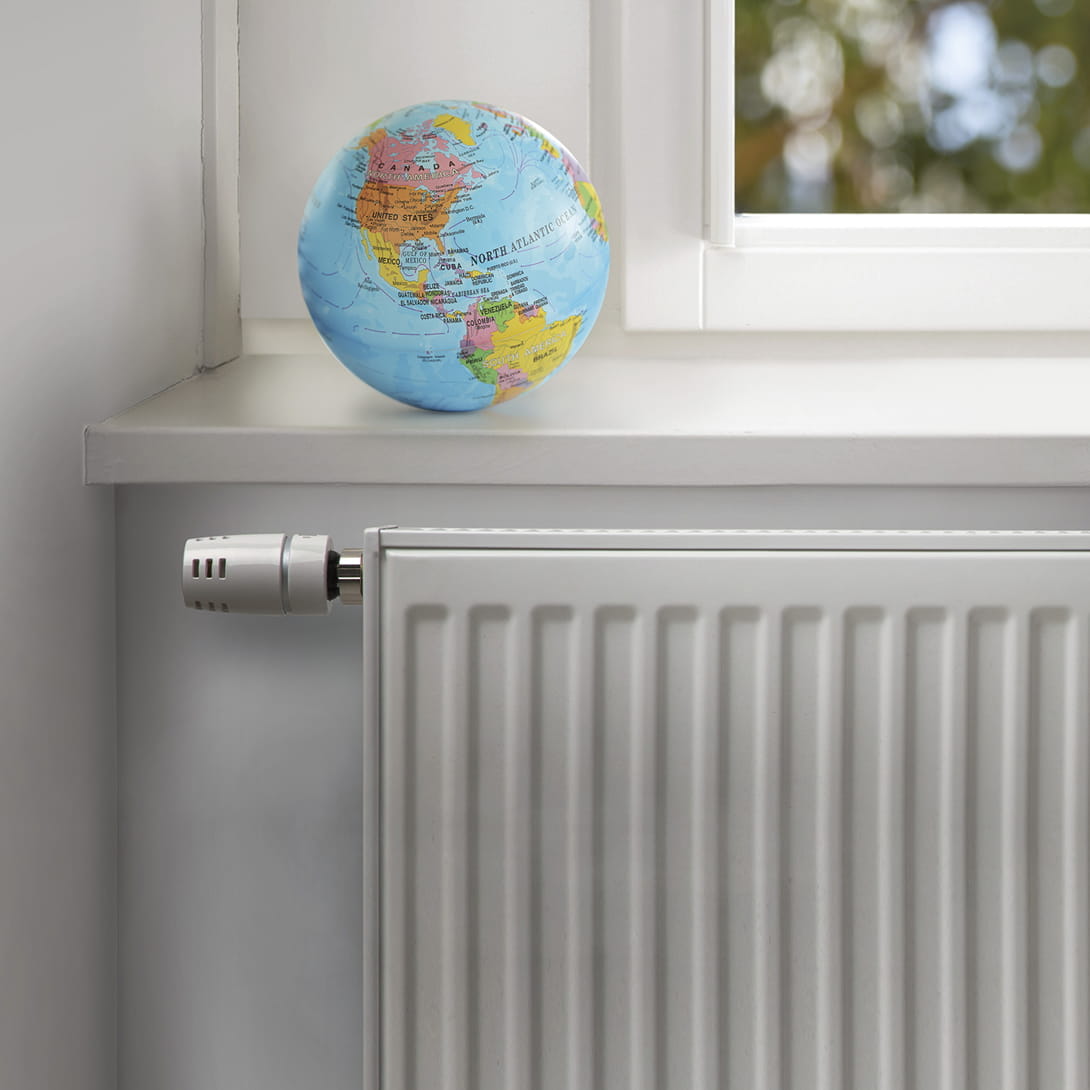Checklist radiator replacement
Choosing the right heat exchanger
Renovating a complete heating system is a complex task with no ‘one solution’ option. Finding the right solution depends not only on the existing building fabric, but also any future renovation plans that may happen later, including any refurbishment work on individual rooms.
Whether you are installing a new bathroom, updating a kitchen, looking for products to help allergy suffers or simply updating to high-quality radiators, there are several possibilities for your radiator replacement.
We have a wide range of solutions available, and as your partner in the field of indoor climate comfort, we can provide the right solution for you.
Heat exchangers for special requirements – a checklist
| Terms of reference | Type of heat exchanger | Solution from Purmo | Reasons for use | Design |
| Modernisation | Compact radiators | Compact, Plan, Plan Plus, | High performance with small dimensions | Different surfaces, modern simple form |
| Tube radiators | Column | Hub spacing as required by individual production | Classical shape | |
| Underfloor heating | ts14 R, klettjet R, eco clay | Radiators not desired, heating and cooling | Invisible in the ground | |
| Sophisticated living space design |
Design and vertical radiators | Plan Vertical, Plan Plus Vertical, Tinos, Paros | Radiators as a design element of the interior | Vertical design |
| Convectors for windows over the whole height of the room |
Plan Plus & Column | Overall height only 20 cm, large convection surfaces, optional heat radiation screen | Simple and unobtrusive design | |
| Bathroom | Bathroom radiators | Apolima, Elato, Flores, Santorini, Apia, Leros, Evia |
Eye-catcher through sophisticated design, radiators are suitable as towel warmers | Wide range of models for all tastes |
| Design and vertical radiators | Tinos, Paros, Column | Powerful despite low depth, practical thanks to optional towel holder | Timeless design | |
| Electric radiators in combination with Underfloor heating | Flores E, Elato E / underfloor heating |
Quick heating up when needed, pleasantly warm floor, heated towels | Classic or modern design | |
| Little space in the kitchen | Vertical radiators |
Plan Vertical, Plan Plus Vertical, Tinos, Paros, Column | Instead of radiators in the window niche, a work surface with a base cabinet can be placed. | Different designs, possibility to attach a towel rail |
| Convector for installation in skirting | Kickspace | Does not take up valuable space on the kitchen walls, disappears behind the skirting | Invisible convector | |
| Allergy sufferers | Compact radiators without fins | Plan | Easy to keep dustfree due to missing slats | Simple form with flat front surface |
| Column radiators | Column | Easy to clean due to rounded edges and large distances between the tubes | Classic radiator shape | |
| Underfloor heating | ts14 R, klettjet R, eco clay | Warm surfaces effectively reduce bacteria, mould and mites, low dust turbulence | Invisible in the ground | |
| Only temporarily used rooms |
Electric radiators | RIO Plan, Electric Column | Low investment costs compensate for higher operating costs | Wide range for every taste Elegant and unobtrusive |
| Cooling rooms in summer | Fan convectors | Vido | Low additional investment if a reversible heat pump is available | Elegant and unobtrusive |
| Underfloor heating | ts14 R, klettjet R, eco clay | Heating and cooling | Invisible in the ground |
Electric radiators
In the past, electric heat generators were frowned upon - and with good reason, because for every kilowatt of heat output a coal-fired power station had to generate 3 kilowatts of heat. Today, this has changed due to the regenerative shares in the electricity grid.
This has also made electricity heating more environmentally friendly.
But that is not the only advantage.
Electric heating sys- tems are favourable in terms of investment costs because no pipelines have to be laid. An electrical connection is sufficient. If a room is seldom used, for example the hobby room or a guest room, the higher consumption costs are hardly noticeable. An electric radiator in the bathroom can also be useful in the transitional period if the boiler is not yet in winter operation.

Disposal of old equipment
Radiators from Purmo provide comfortable and efficient heat - for many decades. At the end of their service life, all components can be separated and recycled. The second point naturally also applies to your old radiators, because metals can always be recycled without problems. The craftsman will usually take back your old radiators.
Recycling is also a trump card when it comes to packaging. The radiators are delivered in an environmentally friendly transport packaging with edge pro- tection – wraparound cardboard box sealed in foil. The packaging secures the new radiators even in the rough everyday life on the construction site and it is easy to separate and recycle.

Guarantee
Radiators must permanently withstand high pressure. Purmo therefore subjects every radiator to a pressure test in the plunge pool. The pressure is far above the values required by the standards.The radiators are coated in a complex process. First the radiator is degreased with an alkaline detergent and treated with iron phosphate. An electric bath creates a cor- rosion-resistant primer.
Coating with polyester epoxy resin and heating to about 200 °C finally results in a durable and visually appealing pro- tective layer. All radiators meet the strictest quality standards. That is why Purmo gives a 10-year guarantee on all radiators. The only exception is electric radiators, which are covered by a 2-year guarantee.

